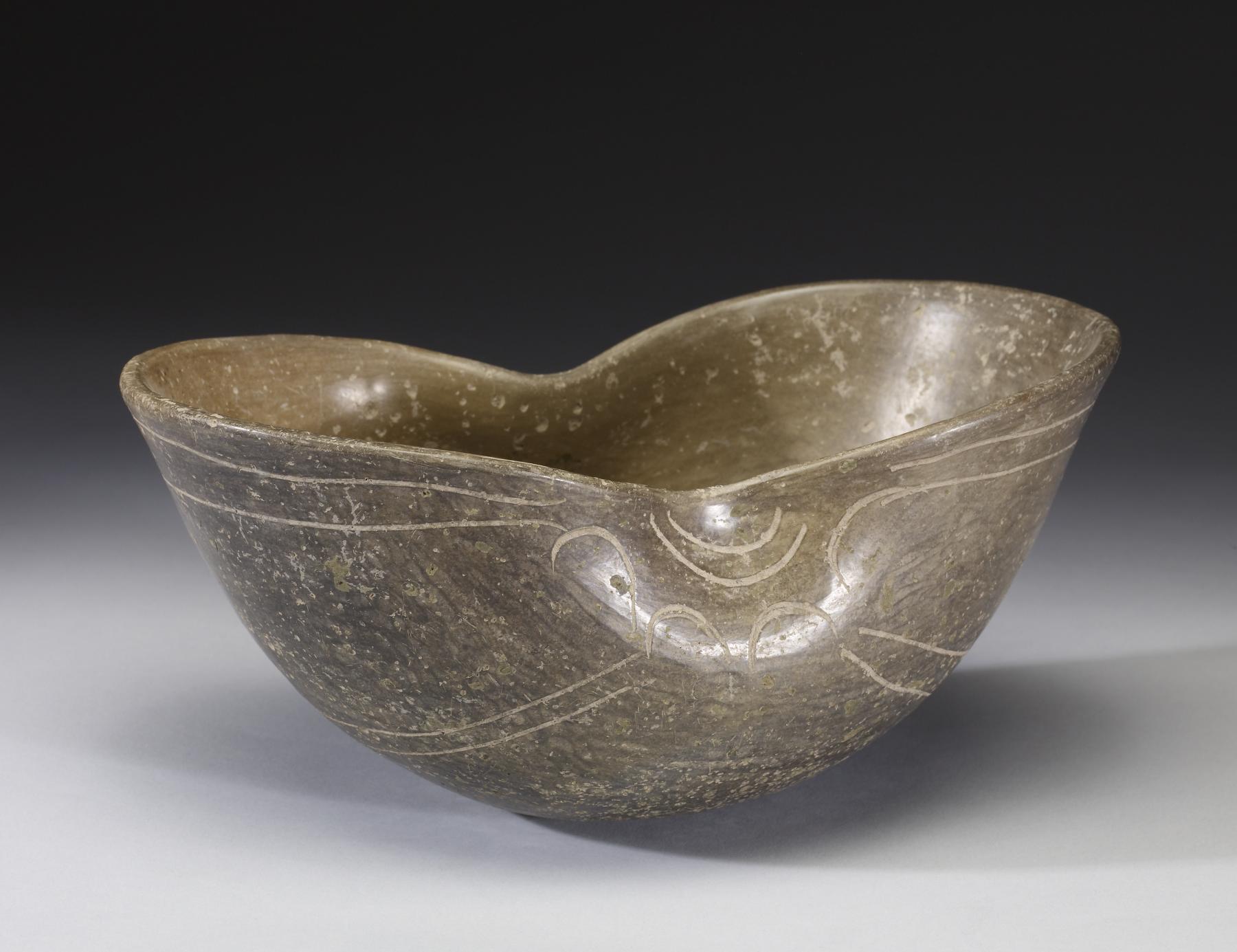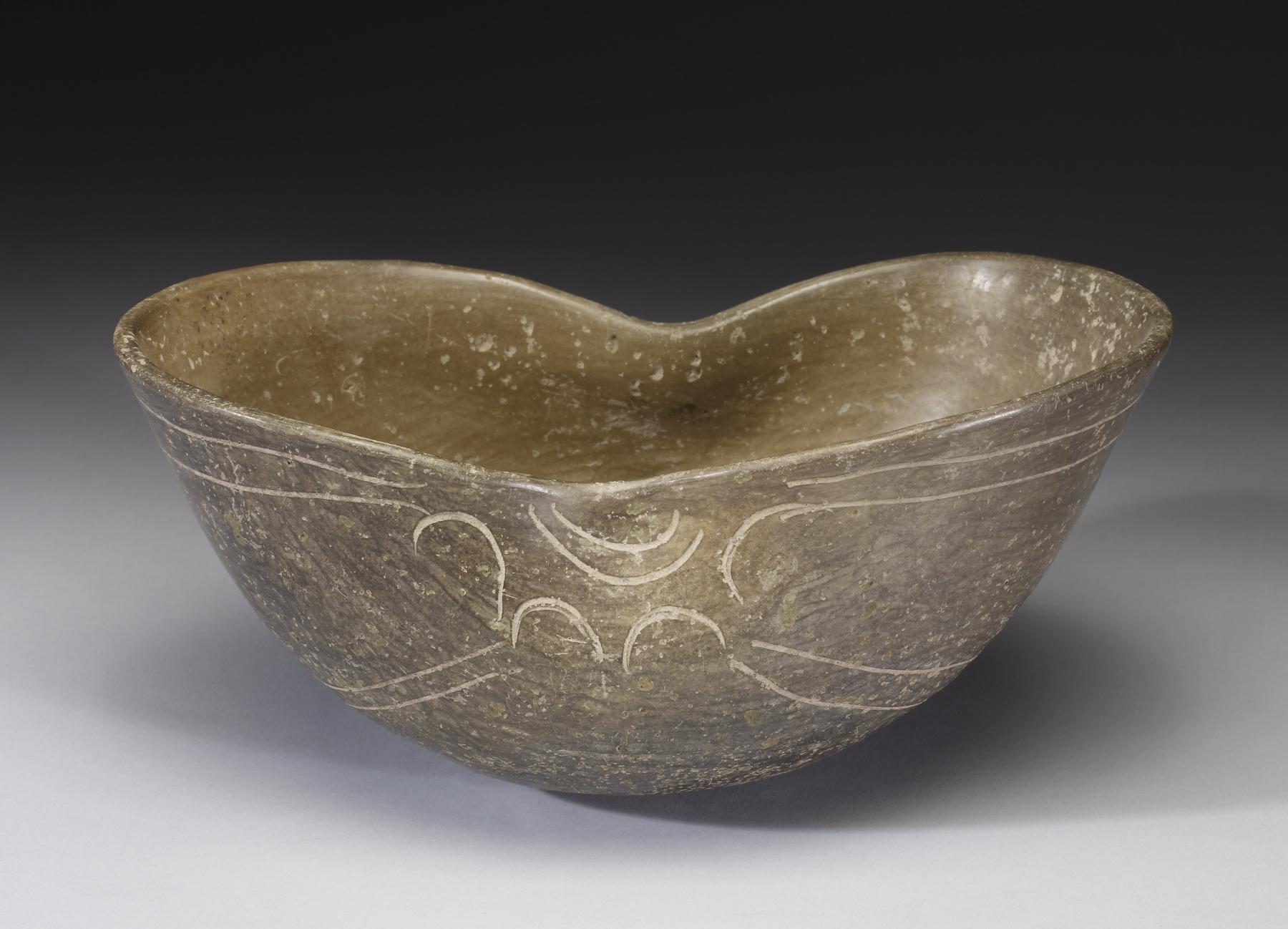Bowl with Incised Motifs
(Ancient Americas )
The brown color and elongated, curvilinear form of this bowl recalls that of a gourd, the most common food-service vessel in Mesoamerica. To this day, gourds remain an important household item as well as the preferred container for ceremonial offerings, from those for curing the sick to Catholic rites of veneration. Throughout Mexico, Belize, and Guatemala today, guests are honored by being served a chocolate beverage in a gourd drinking cup, a practice reaching back at least to 1600 bce. The bowl's graceful curvature is accentuated by the burnish lines that follow the vessel's contours. In place of the gourd's stem, the artist incised geometric motifs that have symbolic associations. The four short, arched lines recall the gum line of the jaguar and the Olmec dragon, which symbolizes the surface of the earth. Radiating from this important motif are parallel lines that imply the gourd's natural flutes.
Provenance
Provenance (from the French provenir, 'to come from/forth') is the chronology of the ownership, custody, or location of a historical object. Learn more about provenance at the Walters.
Stendahl Galleries, Los Angeles [date and mode of acquisition unknown] [1]; John G. Bourne, 1970s, by purchase; by bequest to Walters Art Museum, 2017.
[1] Said to have been found "one inside the other" with 2009.20.269
Exhibitions
| 2012-2013 | Exploring Art of the Ancient Americas: The John Bourne Collection Gift. The Walters Art Museum, Baltimore; Frist Center for the Visual Arts, Nashville. |
Geographies
Mexico, Central Highlands (Place of Origin)
Measurements
H: 4 1/8 x W: 9 5/16 x D: 6 in. (10.48 x 23.62 x 15.24 cm)
Credit Line
Bequest of John G. Bourne, 2017
Location in Museum
Not on view
Accession Number
In libraries, galleries, museums, and archives, an accession number is a unique identifier assigned to each object in the collection.
In libraries, galleries, museums, and archives, an accession number is a unique identifier assigned to each object in the collection.
2009.20.270




